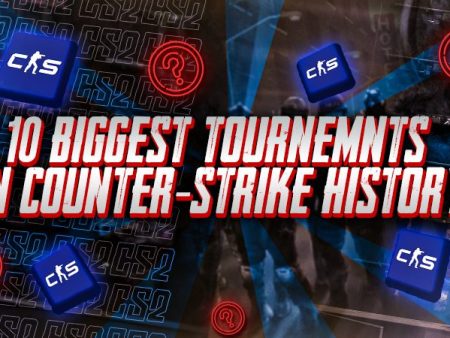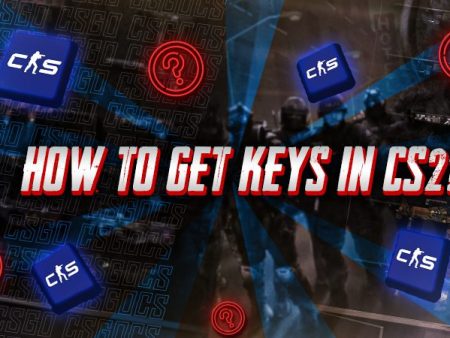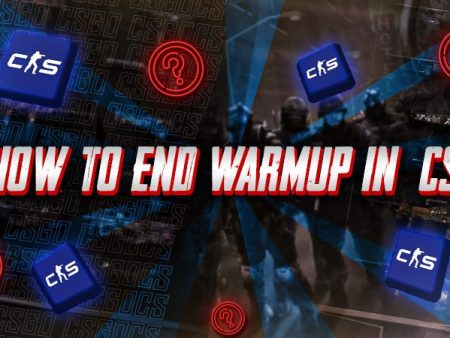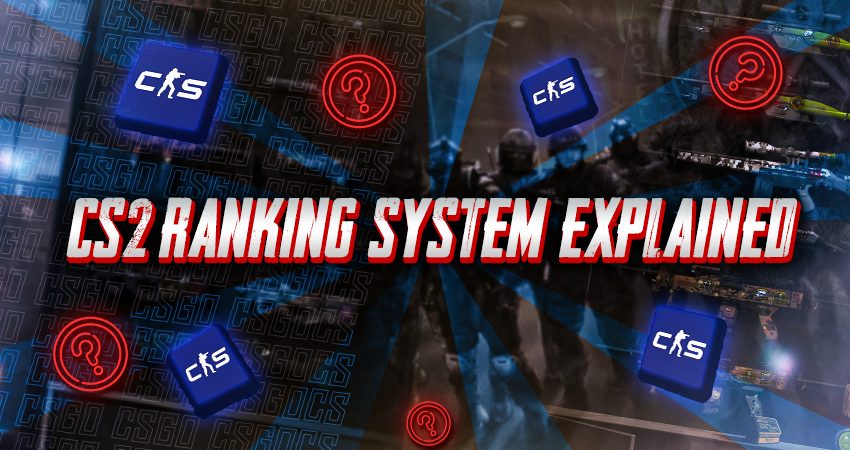
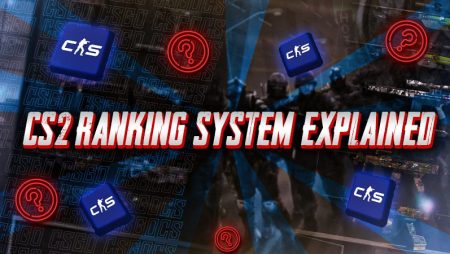
Counter-Strike 2 introduced major changes to how player skill is tracked and measured. While older players may remember a single global rank, CS2 now features multiple systems designed to give a more accurate view of your performance.
This article breaks down everything you need to know about the CS2 ranking system- how it works, what types of ranks exist, and how each one affects your progress in the game.
CS2 Ranking Systems
CS2 uses multiple ranking systems to measure performance across different modes and playstyles. Each one tracks progress differently and serves its own purpose.
Here’s a quick overview of all CS2 ranking systems:
- Premier Rating (MMR-Based): Numeric skill rating tied to a global and regional leaderboard
- Competitive Ranks (Map-Based): Traditional matchmaking ranks split per map
- Wingman Rank: Separate 2v2 rank for Wingman matches
- Profile (XP) Ranks: XP-based level shown on your profile; resets after Rank 40
Understanding the CS2 Ranking System
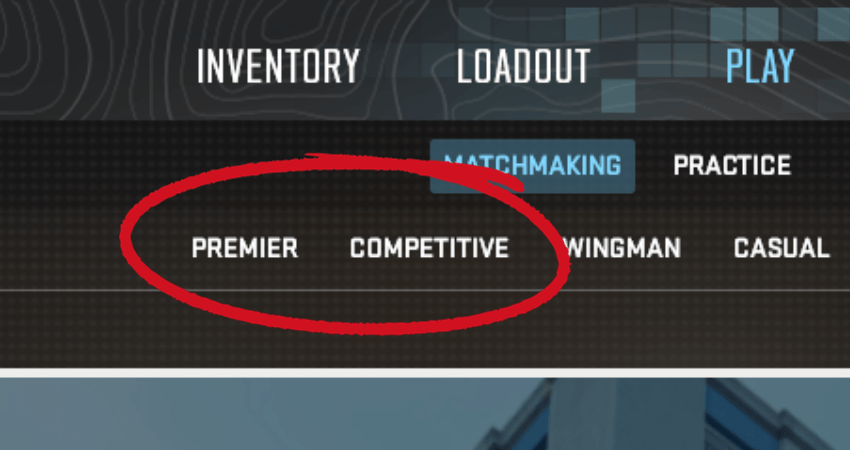
In CS:GO, the matchmaking system used a single rank to represent your overall skill level. It pulled from a list of 18 distinct ranks, from Silver I to Global Elite- but that rank was global. It didn’t account for performance differences between maps or offer much transparency into how it was calculated.
Over time, players noticed major inconsistencies. You could dominate on one map and struggle on another, yet still have the same rank. And no matter how well you played, your progress often felt disconnected from real improvement.
With CS2, Valve introduced the Premier mode and its Matchmaking Rating (MMR) system. Instead of progressing through fixed ranks, players earn a visible numerical score. Win a match, and you take points from your opponents. Beat higher-rated teams or perform well individually, and you gain more. It’s simple, fair, and similar to systems used in other competitive games- like Faceit.
The old competitive rank system still exists but now works on a map-by-map basis, giving players a more accurate picture of their performance across different locations.
Premier Rating (MMR-Based)
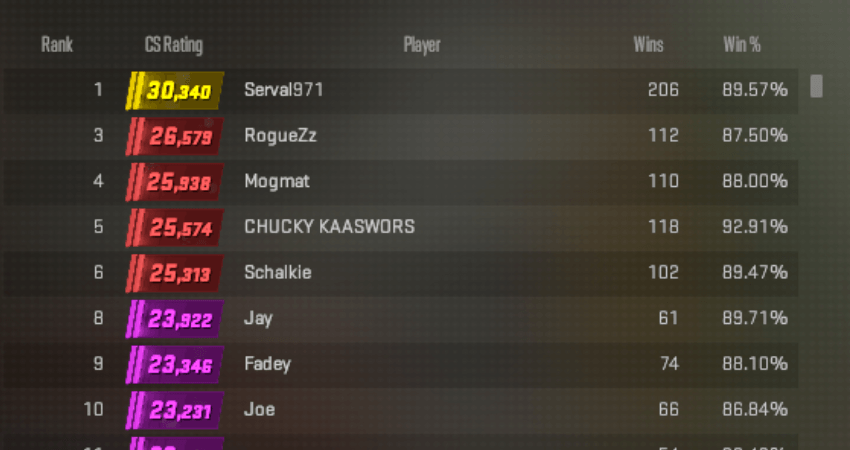
Premier is CS2’s most competitive mode. Players receive a numerical CS Rating after winning 10 placement matches. This number reflects your overall skill across all maps in the Premier pool and determines your position on a regional and global leaderboard.
Premier matches begin with a map veto phase, where teams ban maps until one is left. This system encourages broader map knowledge and balanced play.
Your CS2 Rating changes after each match depending on whether you win or lose and the rating of the players you’re matched with.
CS2 Rating Tiers
Your numerical CS Rating also places you into one of seven color-coded tiers:
- Gray: 0 to 4,999
- Light Blue: 5,000 to 9,999
- Blue: 10,000 to 14,999
- Purple: 15,000 to 19,999
- Pink: 20,000 to 24,999
- Red: 25,000 to 29,999
- Yellow/Gold: 30,000+
Top players globally have ratings over 40,000, but reaching the Yellow tier already puts you in rare company.
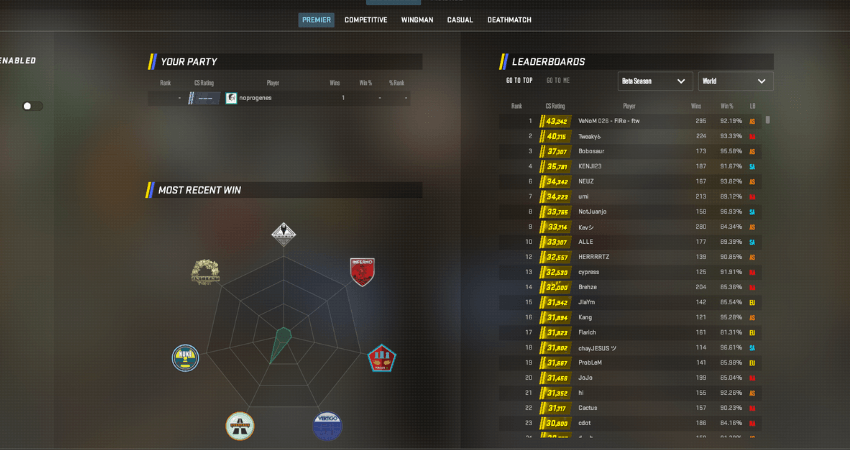
Although CS2’s Premier mode uses a completely different ranking system based on numerical MMR, many players still reference the old CS:GO ranks for comparison. While Valve hasn’t published any official equivalency chart, the community has formed rough estimates based on performance levels. Here’s how the current CS2 rating tiers roughly translate to the old Competitive ranks:
- Gray (0-4,999): Silver I to Silver Elite Master (S1-SEM)
- Light Blue (5,000-9,999): Gold Nova I to Gold Nova Master (GN1-GNM)
- Blue (10,000-14,999): Master Guardian I to Master Guardian Elite (MG1-MGE)
- Purple (15,000-19,999): Distinguished Master Guardian to Legendary Eagle Master (DMG-LEM)
- Pink (20,000-24,999): Supreme Master First Class (SMFC)
- Red (25,000-29,999): Global Elite level performance
- Yellow/Gold (30,000+): Top 0.1% of players globally- beyond Global Elite
If you want to know more about Premier mode, read our CS2 Premier mode explained article or if you want to get started check our guide on how to play it.
Competitive Ranks (Map-Based)
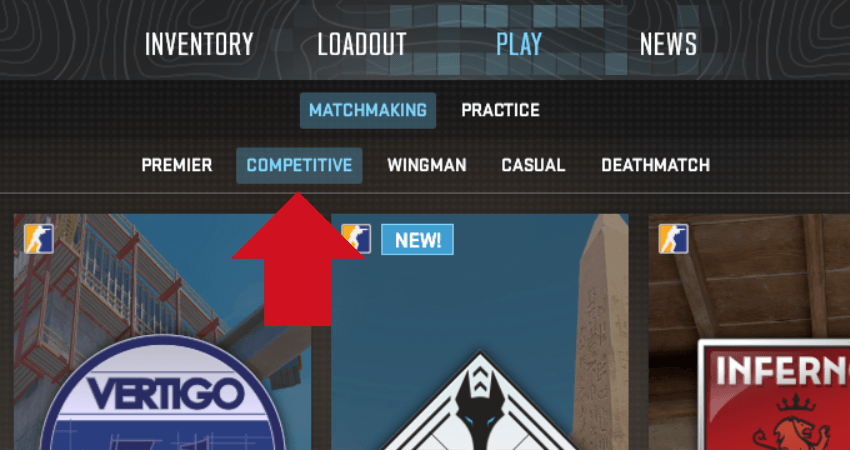
CS2’s traditional 5v5 Competitive mode now tracks ranks separately for each map. That means you’ll have a unique rank for Mirage, Inferno, Nuke, and so on- based entirely on your performance on that specific map.
You’ll need to win 10 matches on a map to earn its rank. The system adjusts your rank based on consistency, match outcomes, and the skill level of your opponents.
This encourages players to learn more maps and removes the issue of one-trick players hitting high ranks on just a single map.
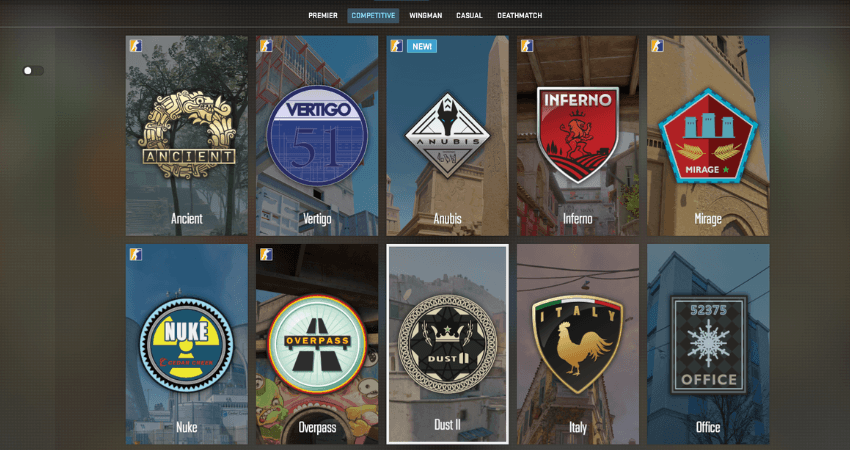
List of CS2 Competitive Ranks
- Silver I (S1)
- Silver II (S2)
- Silver III (S3)
- Silver IV (S4)
- Silver Elite (SE)
- Silver Elite Master (SEM)
- Gold Nova I (GN1)
- Gold Nova II (GN2)
- Gold Nova III (GN3)
- Gold Nova Master (GNM)
- Master Guardian I (MG1)
- Master Guardian II (MG2)
- Master Guardian Elite (MGE)
- Distinguished Master Guardian (DMG)
- Legendary Eagle (LE)
- Legendary Eagle Master (LEM)
- Supreme Master First Class (SMFC)
- Global Elite (GE)
We think Valve kept this system because it rewards map knowledge more fairly. Ranking players separately on each map prevents one-map specialists from inflating their overall rank and encourages broader skill development. It’s a smart change- and one we agree with.
If you want a more detailed look at how these ranks work and what they represent in real matches, check out our full breakdown in CS2 competitive mode ranks article. It explains how skill levels feel across each rank and what kind of gameplay you can expect.
[RELEVANT: What’s Difference Between CS2 Competitive and Premier Modes]
Wingman Rank
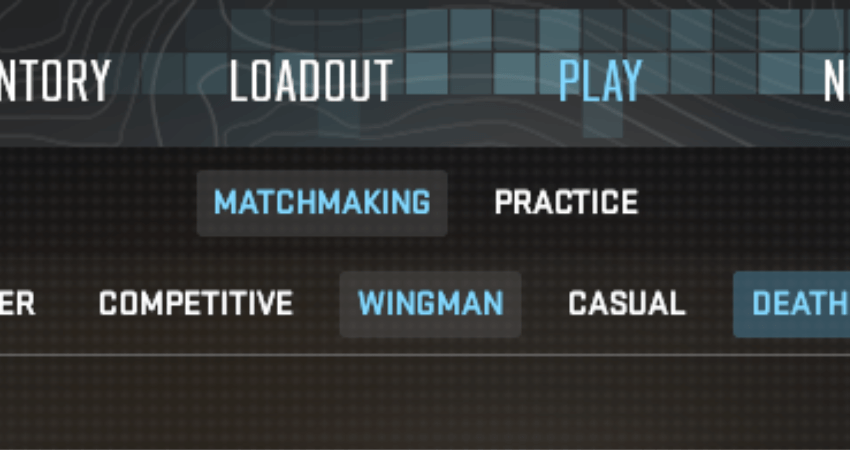
Wingman is CS2’s 2v2 competitive mode, played on smaller sections of maps like Short Dust or Inferno Mid. It’s a faster-paced, more intimate version of traditional Counter-Strike and offers a very different kind of challenge- relying heavily on tight coordination, quick trades, and precise positioning.
Wingman has its own dedicated ranking system, completely separate from both Premier and Competitive modes. Your Wingman rank doesn’t affect your MMR or map-based ranks in other modes, and it only changes based on your performance in 2v2 matches.
To receive your Wingman rank, you’ll need to win 10 placement matches. After that, your rank updates based on wins, losses, round difference, and the skill level of your opponents. Since the player pool is smaller in this mode, your rank can shift more dramatically from match to match.
Wingman uses the same 18-rank system as Competitive- ranging from Silver I to Global Elite- but it functions as a single overall rank, just like the old CS:GO system. It is not split by map.
This mode is especially useful for improving close-quarters engagements, holding tight angles, and practicing quick decision-making. It’s also a great choice for duo partners looking to sharpen their coordination without depending on a full team.
If you want to try out Wingman and learn how to get started, we’ve covered everything in our article how to play CS2 wingman game.
Profile (XP) Ranks
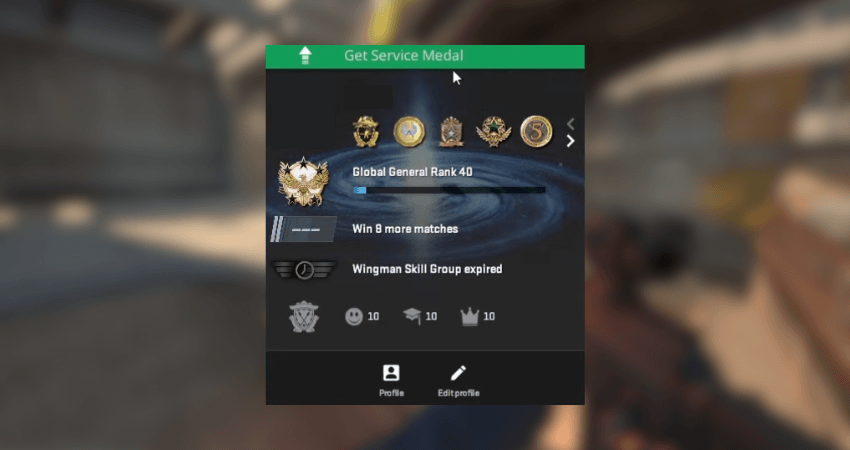
Your Profile Rank is based on XP earned while playing any mode in CS2. You don’t need to win matches to level up- just play regularly and complete matches.
Key details about Profile Ranks:
Required to unlock features like Prime and Weekly Drops
You must reach Private Rank 2 to play Competitive or Premier
Once you reach Rank 40, you can reset your XP bar and earn a Service Medal
Service Medals are awarded yearly and show on your profile
While Profile Ranks don’t affect matchmaking, they are important for accessing other features and earning cosmetic rewards.
If you want to learn the fastest way to earn XP and level up quickly, check out our article fastest ways to level up in.
[RELEVANT: How to Rank Up in CS2]
Summary
| Ranking System | Type | Purpose | How It Works | Ranks / Rating |
|---|---|---|---|---|
| Premier Rating (MMR) | Numeric (0-40,000+) | Measures global skill and leaderboard position across all maps | Win matches to gain rating; higher gains for beating stronger opponents; map veto phase applies | 7 color tiers: Gray to Yellow. Placement after 10 wins |
| Competitive Ranks | 18 fixed ranks/map | Tracks map-specific performance in 5v5 matchmaking | Separate rank per map; need 10 wins to get ranked; adjusts per performance and opponent strength | Silver I to Global Elite per map |
| Wingman Rank | 18 fixed ranks total | Measures skill in 2v2 matches on small sections of maps | Single rank; not map-based; win 10 placement matches to receive rank; updates with each match | Silver I to Global Elite (shared system with Competitive) |
| Profile (XP) Rank | XP Level 1-40+ | General progression, unlocks features like Prime and Service Medals | Earn XP by completing matches in any mode; resets at 40 to grant a yearly Service Medal | Private Rank 1-40; resets for yearly Service Medal |
Conclusion
CS2 splits its ranking system into four distinct categories- each with a specific purpose. Premier mode focuses on overall performance with a leaderboard-based rating. Competitive mode measures your map-specific skill with 18 classic ranks. Wingman tracks progress in 2v2 battles. And Profile XP Ranks give casual players an additional sense of progression and unlock features as you play.
Now that you understand how each system works, you’ll be better prepared to focus on the ones that matter most to you- and climb more effectively in CS2.
